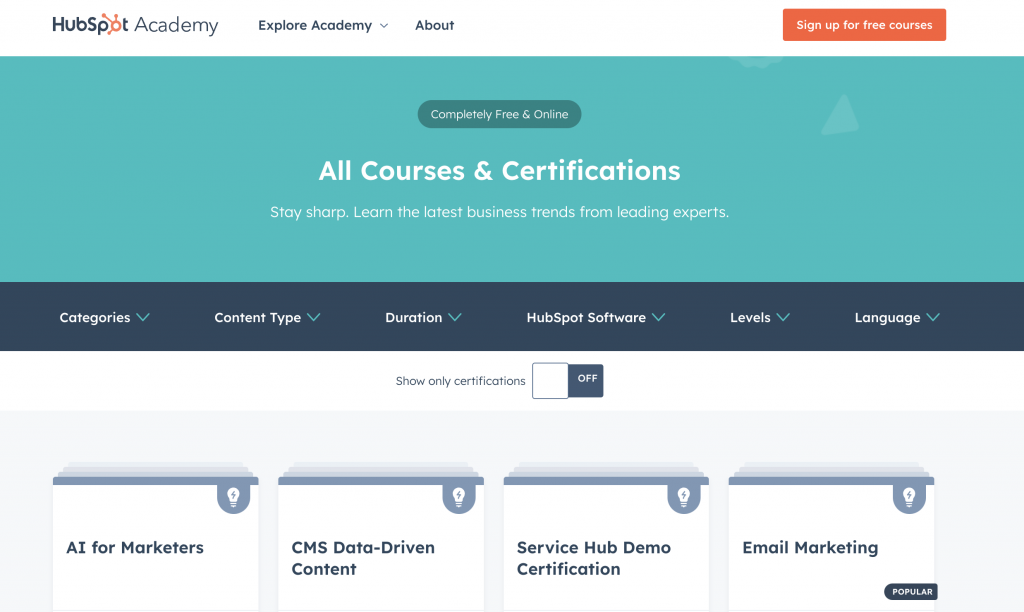blog»Digital Marketing»5 New Year’s Resolutions for E-commerce Marketing Managers

5 New Year’s Resolutions for E-commerce Marketing Managers
2024/01/02
You can read this article in about 29 minutes
Introduction
As we step into another year, the ever-evolving world of e-commerce continues to present both exciting opportunities and formidable challenges for marketing managers. In this digital age, where consumer habits and technology trends shift rapidly, staying ahead in the online marketing game is more crucial than ever. The start of a new year offers the perfect moment for reflection and setting goals; it’s a time to embrace new strategies that can propel an e-commerce business to greater heights.
For e-commerce marketing managers, this period of new beginnings is an opportunity to reevaluate and refresh their approach. It’s not just about riding the wave of digital transformation but mastering it to create impactful, customer-centric marketing strategies. As such, adopting New Year’s resolutions isn’t just a personal tradition but a professional imperative. These resolutions are commitments to growth, adaptation, and continuous learning in a field that is as dynamic as it is competitive.
In this article, we will explore five key resolutions that every e-commerce marketing manager should consider adopting. These resolutions focus on various aspects of online marketing – from leveraging data analytics for informed decision-making to enhancing customer experiences and embracing emerging technologies. Each resolution aims to equip you with insights and strategies that are vital for navigating the complexities of today’s digital marketplace. As you read on, think of these not just as resolutions, but as stepping stones to building a more robust, responsive, and successful e-commerce marketing strategy in the year ahead.

Resolution 1: Key Metrics for E-commerce Mastery
In the realm of e-commerce, data isn’t just plentiful; it’s the compass that guides every decision of savvy marketing managers. The key to data-driven success lies in focusing on the most critical metrics that directly impact your business’s bottom line.
Key E-commerce Metrics to Focus On
- Conversion Rate: The ultimate measure of your site’s effectiveness in turning visitors into buyers.
- Average Order Value (AOV): Understanding AOV helps in strategizing upselling and cross-selling tactics.
- Customer Lifetime Value (CLV): This predicts the total value a business can reasonably expect from a single customer account.
- Cart Abandonment Rate: A critical metric that signals lost sales and potential issues in the checkout process.
- Traffic (by Channel): Knowing where your visitors come from can inform where to invest in marketing efforts.
- Mobile Site Engagement: With the increasing use of mobile devices for shopping, mobile engagement metrics are indispensable.
Focusing on these KPIs can help e-commerce marketing managers to make strategic decisions that drive sales, improve customer retention, and optimize marketing ROI. By drilling down into these metrics, businesses can identify strengths, uncover areas for improvement, and adjust their strategies for maximum impact in the digital marketplace.
Integrating Data Analytics into Daily Marketing Activities
To effectively integrate data analytics, consider the following steps:
- Utilize Analytics Tools: Tools like Google Analytics, Adobe Analytics, Ptengine and CRM platforms can provide valuable insights into customer behavior and campaign performance.
- Regular Review and Adaptation: Consistently review the data to identify trends, anomalies, and areas for improvement. Use these insights to adapt your strategies in real-time.
- A/B Testing: Implement A/B testing to compare different approaches and optimize based on the results.
Case Study: Amazon’s Data-Driven Dominance
Amazon exemplifies the power of focusing on key e-commerce metrics for unparalleled success. Known for its obsession with customer-centric data, Amazon leverages these metrics to continually refine and enhance the shopping experience.
- Conversion Rate: Amazon excels in conversion optimization. By analyzing customer behavior, they have streamlined their purchasing process, making it incredibly easy for users to move from browsing to buying.
- Average Order Value (AOV): They employ sophisticated recommendation algorithms to encourage customers to add more items to their carts, effectively increasing their AOV.
- Customer Lifetime Value (CLV): Amazon Prime is a prime example (pun intended) of CLV optimization. By offering value through subscriptions, Amazon has successfully increased the long-term value of its customer base.
- Cart Abandonment Rate: Amazon tackles cart abandonment with timely follow-up emails and personalized product suggestions, turning potential losses into conversions.
- Traffic (by Channel): They meticulously analyze traffic sources to optimize their marketing spend across different channels, ensuring a high ROI.
- Mobile Site Engagement: Recognizing the shift towards mobile shopping, Amazon has optimized its mobile platform to ensure seamless browsing and checkout, resulting in high mobile user engagement.

Amazon’s strategy showcases the effectiveness of harnessing key metrics to drive e-commerce success. Their relentless focus on data-driven decision-making has not only propelled them to the forefront of the digital marketplace but also serves as a blueprint for other e-commerce entities aiming to achieve similar results.
Resolution 2: Prioritize Customer Experience (CX)
As we venture into our second resolution, it’s clear that in the realm of e-commerce, the customer experience (CX) is king. With the digital marketplace becoming increasingly saturated, businesses that prioritize CX set themselves apart, fostering not just transactions, but relationships.
The Growing Importance of CX in E-commerce
The expansion of e-commerce has shifted power to the consumer, making CX a critical differentiator. A positive customer experience is no longer a luxury; it’s a fundamental aspect that can make or break an online business. Customers today expect seamless, personalized, and engaging shopping experiences, and when they receive it, they reward businesses with their loyalty.
Strategies to Enhance Customer Interaction and Satisfaction
Enhancing CX involves several strategic actions:
- Personalization: Use data to offer personalized recommendations and content. Tailoring the shopping experience to individual preferences can significantly increase customer satisfaction.
- User-Friendly Design: Ensure your website is intuitive, easy to navigate, and accessible across all devices. A streamlined path to purchase is essential for a positive CX.
- Customer Support: Provide prompt, helpful customer service across multiple channels. Consider chatbots for efficiency, but also ensure that customers can easily reach a human when needed.
- Feedback Loop: Implement a system to collect and act on customer feedback. This not only improves CX but also shows customers that their opinions are valued.
Case Study: Zappos’ CX Success
A standout example of a company excelling in CX is Zappos. Known for its exceptional customer service, Zappos has a dedicated approach to customer satisfaction, offering a 365-day return policy and 24/7 customer service. Their investment in CX has paid off; Zappos has consistently high customer loyalty and repeat purchase rates.
Zappos doesn’t just sell products; they sell experiences. Their success is evident in their sales growth and industry-leading customer retention rates. For instance, Zappos reported that customers who have the best experiences spend approximately 2.5 times more than those with the lowest. Additionally, their Net Promoter Score, a measure of customer loyalty, consistently outshines competitors.

Emulating Zappos’ commitment to CX can yield significant dividends for any e-commerce business. Prioritizing the customer experience in every aspect of your business strategy is not just a resolution, it’s a transformative step towards building lasting customer relationships and a loyal brand following. This approach is a proven pathway to increased sales, customer retention, and a robust bottom line.
Resolution 3: Leverage New Technologies
In our third resolution for e-commerce marketing managers, we turn our attention to the technological frontier. Emerging technologies such as Artificial Intelligence (AI), Augmented Reality (AR), and Virtual Reality (VR) are not just buzzwords; they’re revolutionizing the way we approach online shopping.
Overview of New Technologies Impacting E-commerce
AI is reshaping customer service through chatbots and personalized shopping experiences by predicting what customers might like based on past behaviors. AR and VR are creating immersive shopping experiences that allow customers to try before they buy in a virtual environment, bridging the gap between the convenience of online shopping and the tangibility of physical stores.
Practical Ways to Incorporate These Technologies into Marketing Strategies
- AI for Personalization and Automation: Use AI algorithms to offer personalized product recommendations, automate customer service with chatbots, and optimize logistics and inventory management.
- AR for Try-Before-You-Buy Experiences: Implement AR technology to allow customers to visualize products in their own space or on themselves, which can significantly enhance the decision-making process.
- VR for Immersive Brand Experiences: Create VR experiences that immerse users in a brand story or let them explore products in a 3D environment, offering a deeper level of engagement.
Potential Benefits and Challenges
The benefits of these technologies are substantial, including increased customer engagement, higher conversion rates, and enhanced customer satisfaction. However, challenges such as high implementation costs, technical complexities, and the need for customer education can be significant barriers.
Case Study: Sephora’s Augmented Reality Triumph
Sephora’s implementation of AR technology through their ‘Virtual Artist’ app stands as a stellar example of leveraging emerging technologies in e-commerce. The app allows customers to try on makeup virtually, using their phone’s camera to apply products instantly onto their live image. This innovative use of AR has not only enhanced the online shopping experience for Sephora’s customers but also significantly reduced product returns and exchanges due to color mismatches.
/cdn0.vox-cdn.com/uploads/chorus_asset/file/8169303/sephora_virtual_artist_tutorials_5_HR.jpg)
The ‘Virtual Artist’ app led to an immersive and interactive customer experience, driving a higher rate of engagement and a measurable increase in sales for the cosmetic giant. Sephora reported that users of the app tended to try on more products virtually than they would physically in-store, leading to more adventurous and larger purchases. Moreover, the app has been credited with increasing both in-store traffic and online sales, as it bridged the gap between physical and digital realms by allowing customers to scan and try products in-store before making a purchase.
Sephora’s success with AR showcases the transformative potential of emerging technologies to not just enhance the customer experience but also to drive tangible business results. It illustrates the importance of integrating such technologies in a way that aligns with customer needs and shopping behaviors, offering a blueprint for e-commerce marketing managers looking to innovate and improve their own brands’ engagement strategies.
Resolution 4: Strengthen Content Marketing Efforts
For our fourth resolution, we focus on the power of content marketing. In the vast sea of e-commerce, content marketing is the lighthouse that guides customers to your brand. It’s about creating and distributing valuable, relevant, and consistent content to attract and retain a clearly-defined audience.
The Role of Content Marketing in Engaging and Attracting Customers
Content marketing is instrumental in establishing trust and authority in your brand. By sharing expertise and providing solutions to problems, you create a relationship with your audience that transcends the transactional nature of buying and selling. This approach nurtures a community of loyal followers who not only purchase but advocate for your products.
Tips for Creating Relevant and Valuable Content
- Know Your Audience: Develop a deep understanding of your customer’s needs, preferences, and pain points. This knowledge will direct the creation of content that resonates with them.
- Consistency is Key: Regularly deliver quality content to keep your audience engaged and to improve SEO rankings.
- Diversify Your Content: Mix up your formats to cater to different segments of your audience. Some may prefer blogs, others videos or infographics.
- Engage with Storytelling: Craft stories around your products or brand that evoke emotions and build connections.
- Measure and Optimize: Use analytics to track the performance of your content. See what works best and refine your strategy accordingly.
Utilizing Different Formats Effectively
Each content format serves a unique purpose in your marketing strategy:
- Blogs boost SEO, establish authority, and provide in-depth information.
- Videos are engaging and can convey complex information in an easily digestible manner.
- Podcasts are convenient for on-the-go audiences and lend a personal voice to your brand.
Case Study: HubSpot’s Content Marketing Mastery
HubSpot, a developer of software products for inbound marketing, customer service, and sales, is a shining example of content marketing done right. They offer a vast array of content resources including blogs, e-books, courses, and webinars that help businesses grow. This strategy has positioned them as thought leaders in the industry and has significantly contributed to their growth.
Their “Inbound Marketing” philosophy has attracted a massive following, generating a large volume of leads. In fact, their blog alone draws millions of visits every month, and their content has been pivotal in converting visitors into customers. HubSpot’s focus on educational content has not only driven sales but has also cultivated a community of users who rely on them for guidance in the ever-changing digital landscape.

Strengthening content marketing efforts is not just about increasing quantity but enriching the quality and relevance of the content. By following these principles and learning from successful companies like HubSpot, e-commerce marketing managers can elevate their brand’s presence and forge deeper connections with their audience.
Resolution 5: Focus on Sustainability and Social Responsibility
The final resolution for e-commerce marketing managers is to center sustainability and social responsibility in their business practices. The increasing awareness and concern over environmental and social issues have led consumers to seek out brands that align with their values.
The Growing Consumer Demand for Eco-friendly and Socially Responsible Brands
Modern consumers are more informed and conscientious than ever before. They’re not just looking for quality products; they want to buy from brands that are committed to positive social and environmental practices. This shift in consumer expectations means that sustainability and social responsibility can no longer be afterthoughts; they need to be core components of your brand identity and operations.
Ways to Integrate Sustainability into Your Marketing and Business Model
- Sustainable Sourcing: Ensure that your products are made with environmentally friendly materials and ethical labor practices.
- Green Operations: Reduce waste and lower the carbon footprint of your operations and supply chain.
- Transparency: Communicate your sustainability efforts honestly and openly with your customers.
- Community Engagement: Get involved in social causes and community projects that reflect your brand’s values.
Case Study: Ben & Jerry’s Sustainable Scoop
Ben & Jerry’s, the beloved ice cream brand, has long stood as a paradigm of integrating social responsibility with sweet success. They’ve made sustainability and ethical practices part of their brand’s recipe, from sourcing Fairtrade ingredients to advocating for climate change policies. Their commitment goes beyond product ingredients; they also focus on reducing greenhouse gases and supporting sustainable food systems.

This eco-conscious approach has scooped them a strong customer base that values ethical consumption. Ben & Jerry’s is a testament to the fact that a brand can be profitable while making the world a bit better – one scoop at a time. Their efforts show that when a company takes genuine steps towards sustainability, it doesn’t just help the planet; it resonates with customers, creating a loyalty that’s as enduring as their flavors.
Conclusion
As we bring our journey through the five crucial New Year’s resolutions to a close, it’s clear that these are more than just goals; they’re the building blocks for the future of e-commerce. Whether it’s through the sharp analysis of data, the nurturing of customer relationships, the bold steps into new tech territories, the crafting of compelling stories, or the embrace of sustainability, each resolution sets the stage for a transformative year ahead.
To all the e-commerce maestros out there, consider these resolutions your playbook for the coming months. They’re about getting down to business with a touch of flair and a lot of care. It’s time to weave these threads into the fabric of your daily grind, turning challenges into triumphs.
So here’s to the coming year, where the potential of e-commerce is as vast as the digital sky. With these resolutions in hand, let’s aim high, push boundaries, and create experiences that resonate and reverberate far beyond the screen. Here’s to a year of growth, innovation, and meaningful connections—here’s to the future we’re all going to shape, one click at a time.